Primary and secondary prevention in lower leg wounds
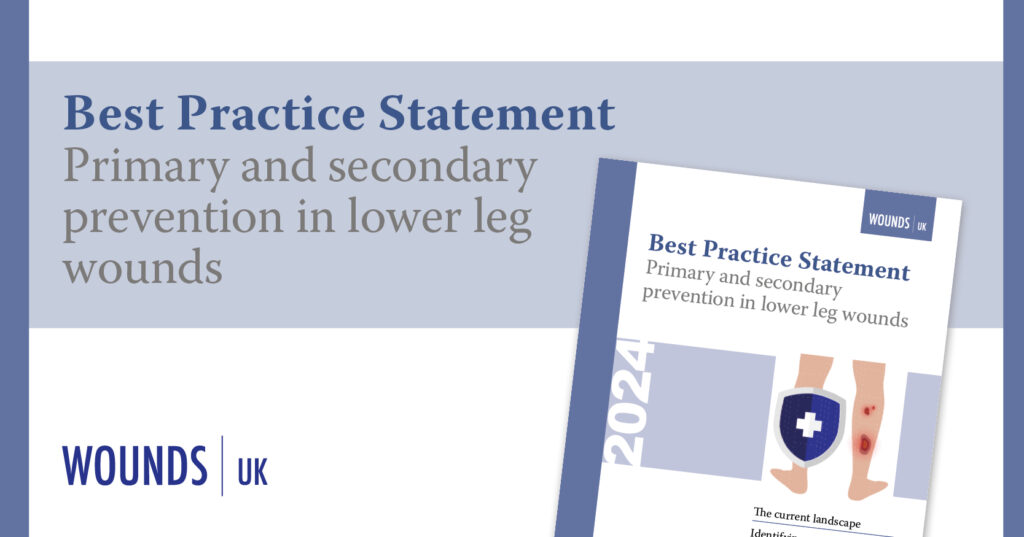
Care should start with a focus on risk assessment and identifying those who are at risk of developing a wound – as opposed to managing a wound that has developed (Fletcher, 2022). Where primary prevention is not possible, early intervention is key. An example of best practice is the model of risk assessment for pressure […]
Improving offloading for the foot in diabetes: Use of total contact casting in practice
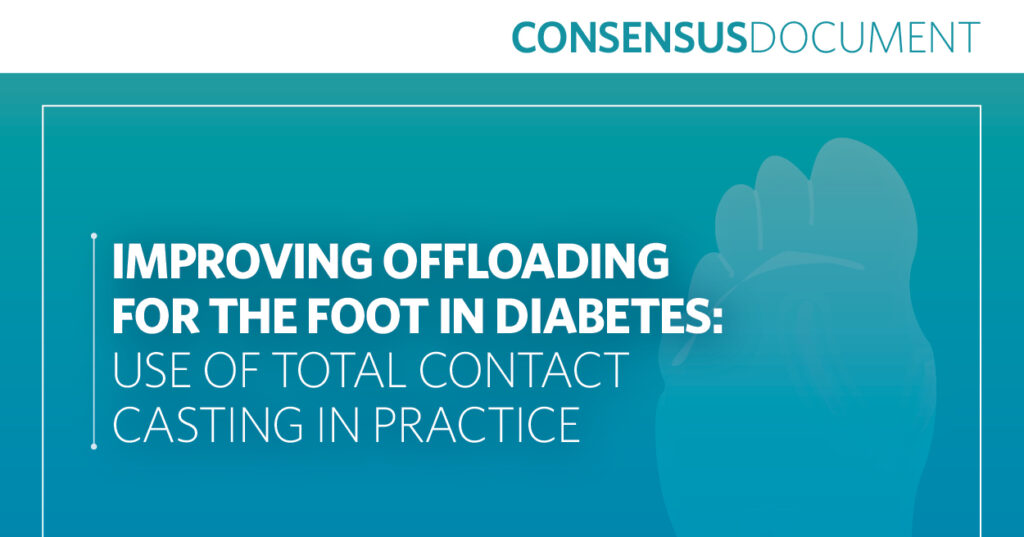
There are approximately 18.6 million people across the globe that are affected by a diabetic foot ulcer (DFU) every year (Armstrong et al, 2023), underlining the significant burden placed on healthcare systems. The scale of the problem in the UK is amplified by the growing number of people with diabetes in the population (Diabetes UK, […]
Malignant wounds: Management in practice
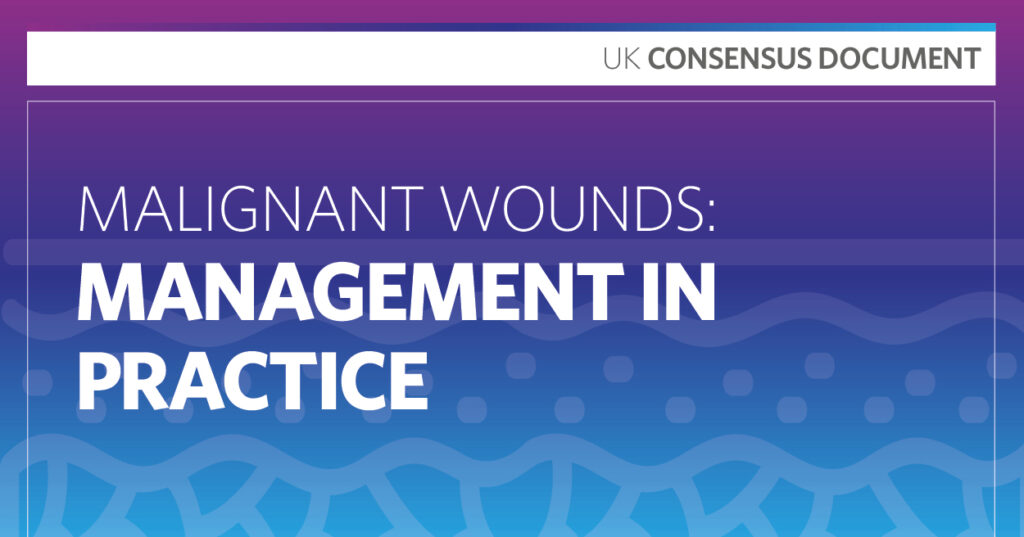
A malignant wound is a devastating complication associated with cancer. Malignant wounds can be extremely challenging – and distressing – for patients, family members and clinicians. They are unique wounds to manage, which can be very different from any other wound type. We identified a need for increased awareness and education surrounding this wound type, […]
Effectively assessing ABPI in leg ulcer patients

Arterial assessment is a fundamental aspect of lower limb ulceration assessment; the most common form of objective arterial assessment is the measurement of ankle brachial pressure index (ABPI). However, research by Gray et al (2018) showed that 40% of people with leg ulcers either had not received an ABPI assessment, or it was unclear whether […]
Taking the pain out of wound healing with microcurrent electrical stimulation therapy

Accel-Heal’s symposium on Wednesday 1st May 2024, at the European Wound Management Association conference in London drew a large audience interested to hear how Accel-Heal, a microcurrent electrical stimulation device, can help to take the pain out of wound healing. Dr Amelia Swift, Reader in Healthcare Professional Education at the University of Birmingham, discussed the impact […]
Making the Case: MEDI DERMA-PRO Foam & Spray Incontinence Cleanser and Skin Protectant Ointment
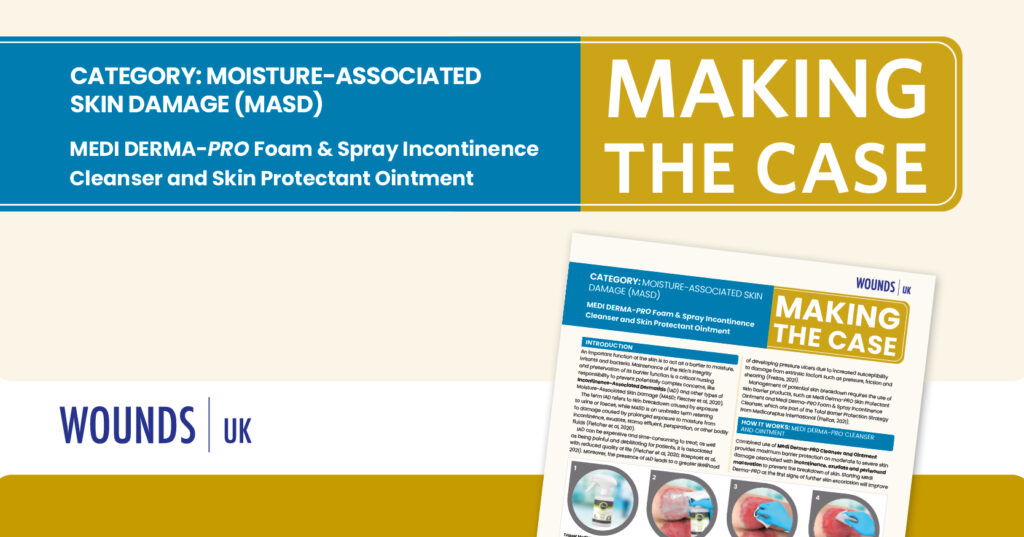
Introduction An important function of the skin is to act as a barrier to moisture, irritants and bacteria. Maintenance of the skin’s integrity and preservation of its barrier function is a critical nursing responsibility to prevent potentially complex concerns, like Incontinence-Associated Dermatitis (IAD) and other types of Moisture-Associated Skin Damage (MASD; Fletcher et al, 2020). […]
Quick Guide: Cutimed® Sorbact® and antimicrobial stewardship
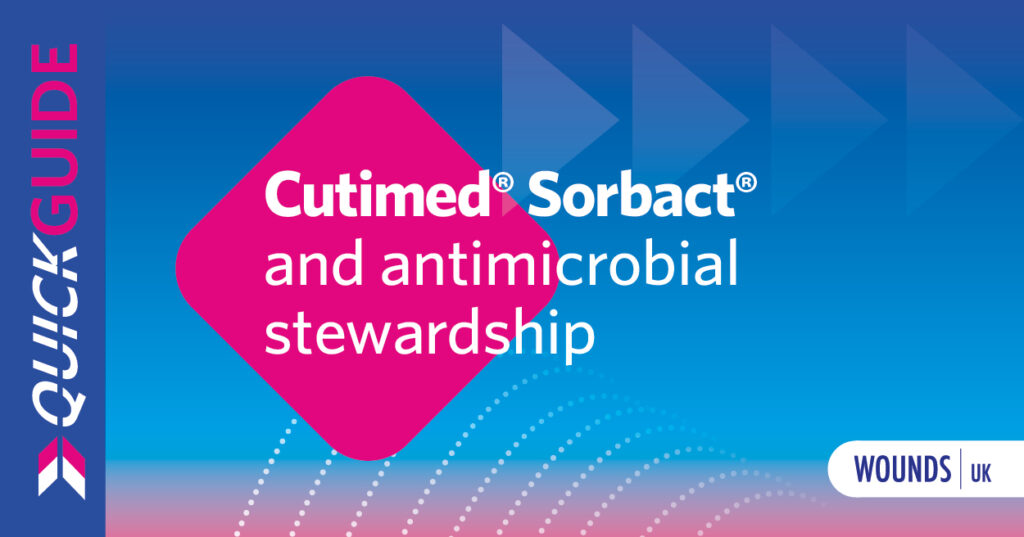
Antibiotics have been used for many years in wound care to treat spreading and systemic infections, in both acute and chronic wounds. However, the widespread use and misuse of antibiotics across medicine and other sectors has allowed the emergence of microbial strains with resistance to one or more antibiotics. Currently, none of the 43 antibiotics […]
Questions to ponder

It’s hard to believe that we are more than halfway through the year already, it’s summer (not that you can be certain judging by the weather) and as we start to firm up our plans for the Wounds UK conference in Harrogate it feels like a good time to reflect on what has happened so […]
The journey of lifelong learning in wound care — a road best taken

Recently, I have been dipping into Florence Nightingale’s book ‘Notes on Nursing: What It Is and What It Is Not’. One of her statements has especially struck a chord with me: “Let us never consider ourselves finished nurses … we must be learning all of our lives” (Nightingale, 1859). However, I think this philosophy applies […]
Greetings and goodbyes

Hello to you all and welcome to the new issue of Wounds UK, the first with me at the helm as editor. I’m thrilled to be working on such a prestigious title with such a wonderful editorial board to help pitch in with reviews, ideas and articles. It is my intention to continue the great […]
Wound management for phlegmasia cerulea dolens of the lower limb: a case report
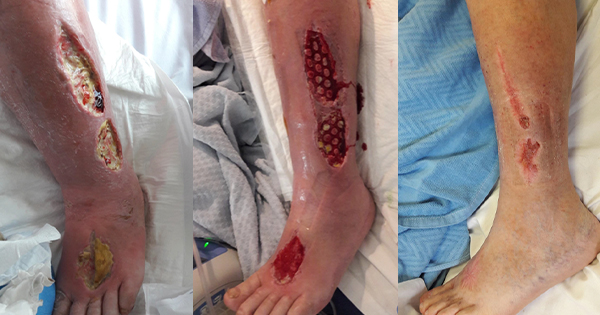
Phlegmasia Cerulea Dolens (PCD; literal translation: ‘painful blue oedema’) is a rare but limb- and life-threatening complication of Deep Venous thrombosis (DVT) of the extremities (Lipe and Cuthbert, 2017). Clinical presentation is an acute and severe swelling of the extremities, predominantly the left lower limb along with ischaemic pain (arterial spasms) and cyanosis (Fong et […]
Implementation of interim dressing kits to address common community wound care challenges

Wound care in the UK is a well-established financial burden costing the National Health Service (NHS) £8.3 billion annually (Guest et al, 2020), £5.6 billion of which is associated with managing unhealed wounds. This cost continues to steadily increase alongside a 71% rise in chronic wound prevalence (Guest et al, 2020). With 81% of the UK’s wound […]
Clinical education summary — masculinising genital affirmation surgery

The first surgeries commenced in December 2021 and two full-time Clinical Nurse Specialist (CNS) posts were created to support the patients through a very complex and often challenging pathway. Approximately 45 surgeries per month are performed by three Andrology Consultants and one Plastics Reconstructive Surgeon. The Masculinising Genital Gender Affirmation Service is a specialist national […]
Lymphascial kinesiology taping for peripheral arterial disease and chronic venous insufficiency
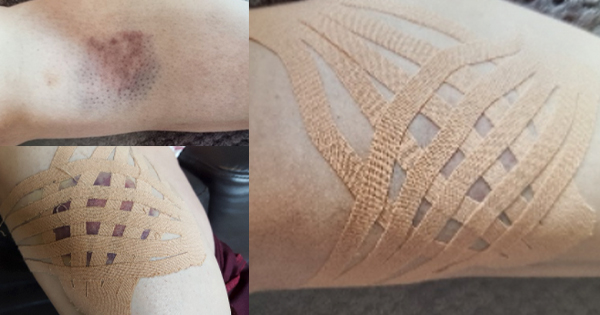
The treatment of peripheral arterial disease (PAD) and Chronic Venous Insufficiency (CVI) is not straightforward. Contradictory guidance on calculating the severity of arterial disease and safe provision of compression therapy (Adriennson et al, 2017), has led to uncertainty, where, through fear of doing harm, patients are referred for vascular assessment, rather than being treated (Elwell […]
Management of scalp wounds
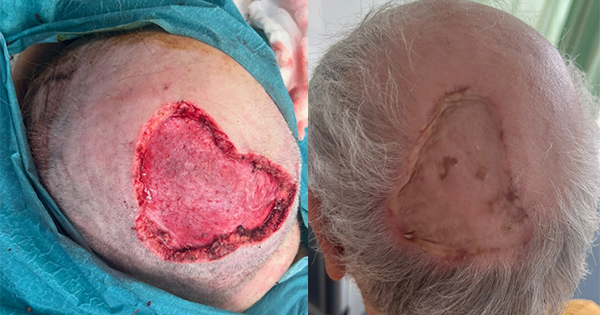
Scalp and forehead reconstruction constitutes a significant clinical challenge, given the intricate complexities inherent in the disease process, the distinct properties of the tissue designated for reconstruction, and the elevated postoperative expectations, especially considering the prominent positioning of the forehead and scalp in facial aesthetics. Oncologic resections, secondary to skin cancers and intracranial lesions, predominantly […]
Prevention, identification and management of surgical wound dehiscence: early prevention and risk assessment

Surgical site infection (SSI) is globally recognised as a SWC, and there are both national and international guidelines available for the prevention of SSI (World Health Organization [WHO], 2018; National Institute for Health and Care Excellence [NICE], 2019a). In the United Kingdom (UK), surveillance of SSI is both mandated and voluntary according to surgical specialty […]
The Coloplast 3 Step Approach – Simplifying Wound Healing
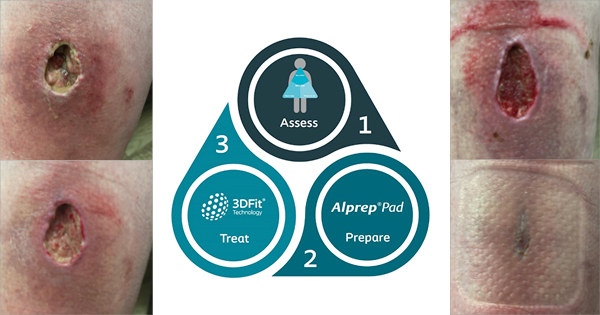
All patients are different and behind every wound is an individual (World Union of Wound Healing Societies, 2020a). Coloplast’s purpose is to make life easier for people living with wounds. They understand that wound healing can be complex; however, choosing the right solution doesn’t have to be. By combining effective products and services designed to […]
Case study to demonstrate the use of Medihoney® barrier cream to treat an mpox blister

The emergence of mpox, a rare infection usually found in central and western Africa, is increasing worldwide. Although there has been an increase in mpox infections in the UK, the risk remains low. Mpox can spread through close skin-to-skin and intimate contact (Centers for Disease Control and Prevention (CDC), 2022). The illness normally lasts two […]
Sharing the journey: pressure ulcer improvement nurse
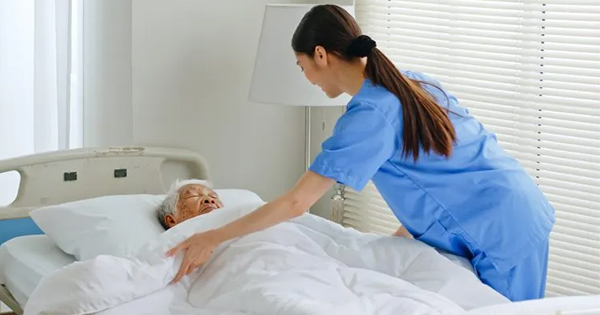
The PUIN meets monthly with the Acute Quality Improvement team to discuss and compare PU figures (measured as rate/count). This helps to identify areas with higher incidence/hot spots, focus where support may be required and find out what this support may involve. The PUIN is able to provide context to incidents and discuss where reviews […]
A personal experience of how I changed my wound care education provision at University of the West of Scotland

After taking on the coordinator role for the 20-credit SQA Level 9 Tissue Viability & Wound Care Module several years ago, I became increasingly concerned over the instructional design, or pedagogy, since no national recommended approach existed. This was particularly important as there had been a noticeable change in the student profile: from acute and […]
Developing courage in health and social care

The last paper in this series identified that leaders and managers in health and social care need courage to undertake their roles. This courage is identified within the Chief Nurse’s 6Cs which applies to all nurses and midwives in the UK (Department of Health, 2012). Here, courage is defined as the ability to act on […]
Overcoming barriers through shared objectives within specialisms
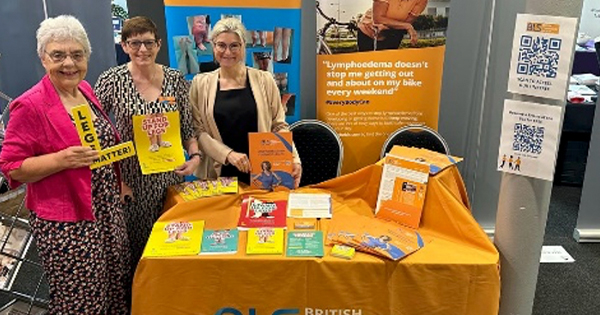
In October 2023, the Leg Club Foundation was invited to attend the British Lymphatic Society (BLS) conference to profile the work of the psychosocial Leg Club model for lower-limb care. Through the concerted visibility of the BLS and the Leg Club, it became apparent that there was an opportunity for a potential consorting to further […]
Research methods: Quantitative observation

Previous articles in this series have considered the use of observation as a research method in qualitative research. Qualitative observation entails capturing how people behave in their natural environments, which in the case of health and social care is usually a hospital, care home or community setting. It is important to note that observation is […]
Supporting Shared Decision-Making to achieve concordance: Strategies for shared decision-making

The power balance in healthcare has changed significantly in the last 50 years. Where previously, healthcare professionals held all the knowledge and power and patients were recipients of this, people now readily seek multiple 2nd opinions, either from other people or, by accessing medical publications and other less reliable sources of information via the myriad […]
Made Easy: Repositioning for pressure ulcer prevention
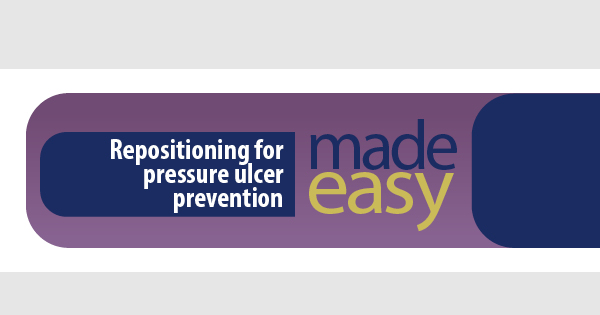
Repositioning for pressure ulcer prevention Pressure ulcers are localised areas of damage to the skin and/or underlying tissue, which usually occur over bony prominences. They result from intense and/or prolonged exposure to pressure, tension or shear, or a combination of these forces, causing deformation of tissue, cells and vasculature. This deformation impacts on the capillary […]
Made Easy: Flaminal® for lower limb wounds
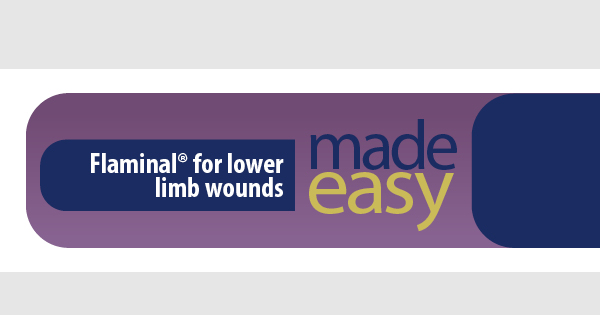
Importance of recognising and treating infections in lower limb wounds Leg ulcers are ulcers on the lower leg (originating on or above the malleolus and below the knee) that have not healed within two weeks (National Institute for Health and Care Excellence [NICE], 2013); however, a foot ulcer originates below the malleolus. In England alone, […]
Challenging something can take a huge effort, but sometimes it has to be done

I find it interesting how we choose to follow or not follow guidance. If the National Institute for Health and Care Excellence (NICE) say ‘do not do’ then everyone stops immediately, even if what they say is that there is insufficient evidence in this patient group; but if NICE recommend, it seems people pick and […]
Keeping up-to-date

Keeping up-to-date with advancements in the field of wound care is crucial for providing high-quality, evidence-based care. Yet finding time to stay current is a challenge in today’s world of healthcare. Nevertheless, staying up-to-date is vital for accountability and is mandated for many healthcare professionals. In this editorial, I’d like to present some strategies for […]
HIV-negative Kaposi sarcoma manifesting as foot lesion in a patient with diabetes mellitus: a case study

Over 4.9 million people are currently living with diabetes mellitus in the UK. Of those patients 1 in 10 has a risk of developing diabetic foot disease (Saeedi et al, 2019; Diabetes UK, 2023). Kaposi’s sarcoma is a rare malignancy in the general population with unique characteristic features (Liu et al, 2018). However, when such […]
Adherence and oxygen therapy: a case series

The prevalence of chronic wounds has increased in recent years and has become a significant public health concern, consuming resources and effecting patients health and quality of life (Guest et al, 2015). Patient-centred care that engages and educates patients about their condition and involves them in decisions about their health should improve outcomes (NHS Confederation […]
Platelet-rich plasma (PRP) for treating chronic or complicated wounds in neonates and children: a case series

Regenerative medicine is the branch of medicine that focuses on the regeneration of damaged organs and tissues. It includes cell-based therapies, grafting or implantation of cells, gene therapy, and treatments based on growth factors and stem cells. Regenerative medicine is mainly applied to the following wounds: According to Pang et al (2017), wounds can be […]
Sharing the journey: an introduction

Mark Twain, the famous American writer, humorist, entrepreneur, publisher and lecturer stated: ‘Success is a journey, not a destination. It requires constant effort, vigilance and re-evaluation’ Twain’s quote from over 100 years ago is applicable to the implementation of new ways of working in healthcare today. New ways of working within healthcare have never been more important […]
Sharing the journey… of setting up a Tissue Viability Service in NHS Tayside: the first year

This journey begins with NHS Tayside acknowledging the need for an expert team and service to support tissue viability across the region of Tayside. As the last remaining Board in Scotland to employ a substantive team, a large scoping exercise was undertaken to inform the business plan and funding was secured to initially advertise for […]
Clinical academic careers: what do I need to know?

As 2024 begins many people will be considering career progression or a change in career. In fact, there will be some who have recently registered as a healthcare professional and may be thinking where do I want to be in 10 years’ time. Becoming a registered healthcare professional opens up a range of different career […]
Courage in health and social care

As we enter 2024, perhaps the most important message to emerge for managers and leaders in 2023 was the need for courage in the workplace. It is arguable that a failure in courage led to one of the most shameful episodes for healthcare in 2023, while the exercise of courage led to one of the […]
Introducing Wound Balance: placing the patient at the heart of wound healing

This article is based on a Made Easy workshop held at the Wounds UK Annual Conference in Harrogate, UK, on 6th November 2023. The workshop and this report were sponsored by HARTMANN. The focus of the workshop was on the Wound Balance concept, which aims to encourage a shift in clinicians’ focus from managing wounds […]
Managing wounds at risk of infection in difficult-to-dress areas
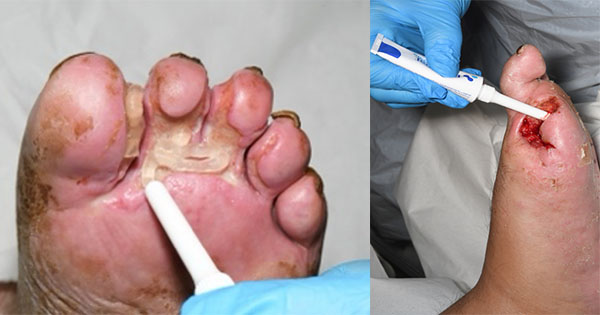
This article is based on a Made Easy workshop held at the Wounds UK Annual Conference in Harrogate, UK, on 6th November 2023. The workshop and this report were sponsored by Flen Health. Steven Percival opened the workshop by introducing antimicrobial resistance (AMR) and methods to reduce AMR, and Leanne Atkin went on to introduce […]
Preventing Medical Adhesive Related Skin Injury (MARSI): introducing a skincare regimen for good practice

This article is based on a Made Easy workshop held at the Wounds UK Annual Conference in Harrogate, UK, on 6th November 2023. The workshop and this report were sponsored by CliniMed. The focus of the workshop was on what a good skincare regimen looks like to prevent and manage medical adhesive-related skin injury (MARSI). […]
Survey of wound care practitioners in response to NICE’s guidance on automated ABPI testing

Ankle brachial pressure index (ABPI) is a non-invasive investigation used to assess for the presence of peripheral arterial disease (PAD), by comparing the systolic blood pressure in the ankle to that at the arm. Compression therapy is the mainstay of treatment for venous leg ulcers (VLUs), but such therapy is contraindicated in the presence of […]
Powdered porcine urinary bladder matrix for treating chronic diabetic wounds: clinical case studies
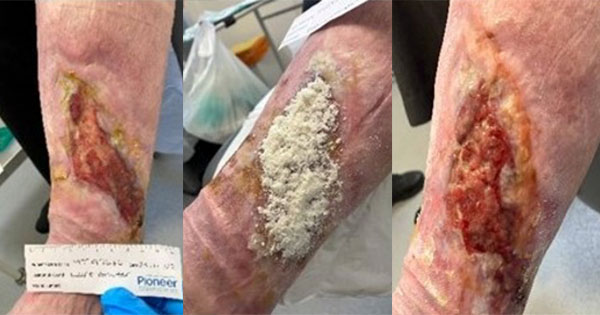
Wound healing is the skin repair process that occurs in response to skin/tissue injury and involves a complex interplay of several physiological systems (NLM, 2023). A typical wound heals within 4–6 week. However, the wound could become chronic if the molecular pathways involved in healing fail to progress within this timeframe (NLM, 2023). The wound […]
Using continuous improvement to enhance wound care services
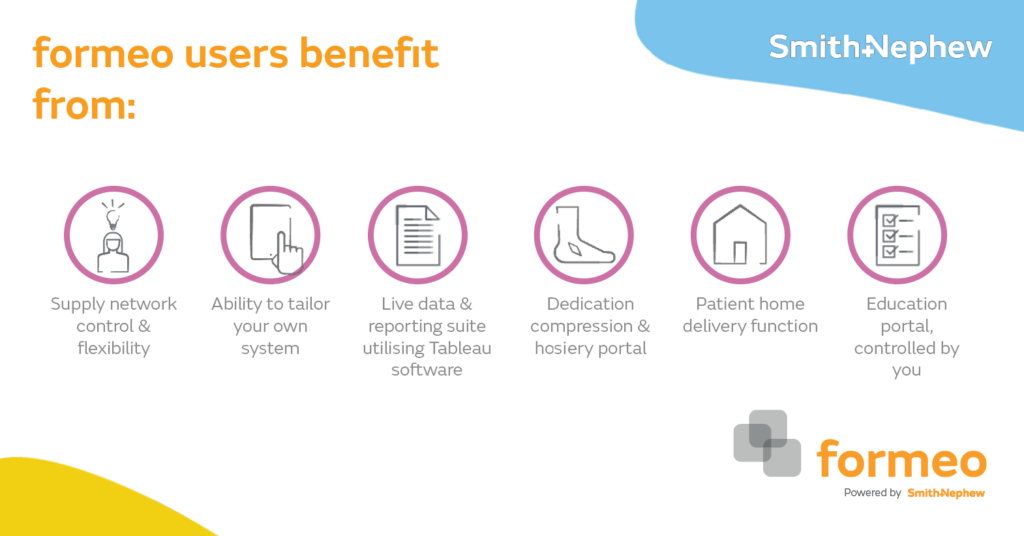
This article is based on a Made Easy workshop held at the Wounds UK Annual Conference in Harrogate, UK on 7th November 2023, sponsored by Smith+Nephew. The aim of the workshop was to give an overview of the advantages of using a continuous improvement approach in wound care. Understanding the wound care service is crucial […]
ActivHeal® PHMB Foam dressing range:a product evaluation

There are significant challenges associated with treating both acute and chronic wounds and promoting wound healing. These include preventing and treating infection, managing wound exudate and improving the patient quality of life (QoL). A wound compromises the skin barrier allowing the entry of a variety of microorganisms, which can lead to infection (International Wound Infection […]
Looking back on the Lindsay Leg Club Foundation 2023 highlights

As the clock strikes midnight on the 31st of December, I am sure I am not alone in making New Year’s resolutions, with the aim of improving one’s lifestyle after overindulging during the festive period. However, having struggled over past years to maintain my well-intentioned improved lifestyle declarations, which sadly had a habit of lasting […]
National Wound Care Strategy Programme update: wound care product classification
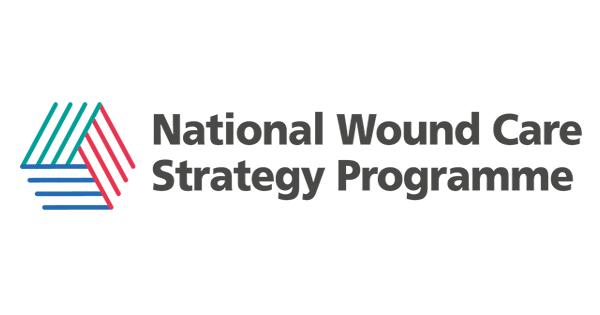
One of the biggest challenges in improving wound care is the lack of good-quality, accessible wound care information. How many people are receiving care for leg or foot ulcers, pressure ulcers or surgical wound complications? How much NHS resource is being used to provide that care? We know that most of the NHS cost of […]
Research methods: qualitative observation

We saw that observation might be used for data collection in both qualitative and quantitative research and that the approach to using it in each is different for reasons related to the types of data it is used to collect and its quality. We also considered that observation forms a useful data collection tool in […]
Quick Guide: Development of a wound care formulary using clinical evidence and ensuring effective change management

Local wound care formularies can streamline and guide the process of appropriate product selection, support clinicians to make cost- and clinically effective decisions, and promote evidence-based practice. Formularies have benefits for both patients and clinicians, including (Wounds UK, 2023): Download the full Quick Guide below
Medstrom launches new Stop the Pressure Day resource with a view to identify pressure ulcers

With Stop the Pressure week well upon us, tissue viability teams from healthcare organisations across the UK and Ireland are working hard to share valuable insights and raise awareness around pressure area care. As such, tools and resources that offer succinct reminders about key pressure ulcer topics are incredibly useful to share amongst caregivers. Therefore, […]
Wounds UK 2023: what to expect

It’s that time of year again, so I am are looking forward to our conference in Harrogate. I’m always pleased with the programme but this year we have really got some great sessions, my three favourites are: I am also really looking forward to our opening session from Leanne Atkin, who will be setting the […]
First time attending a wound conference? Hints and tips to support your experience

Welcome to the conference edition of the journal! We’re excited to bring you a packed agenda with lots of new information that will help to support you and your colleagues in clinical practice. Attending a wound conference for the first time can be a valuable experience, offering opportunities for learning, networking, and staying up to […]
Twice daily use of emollient moisturiser to prevent skin tears among frail older adults in a mental health setting: a narrative review

Despite the high risk of skin tears in mental health settings, there remains a lack of consensus around skin tear prevention in this area. Reflective practice in a mental health setting has revealed the frequent occurrence of skin tears among frail older adults with advanced dementia and mental health disorders. Here we present a narrative […]
